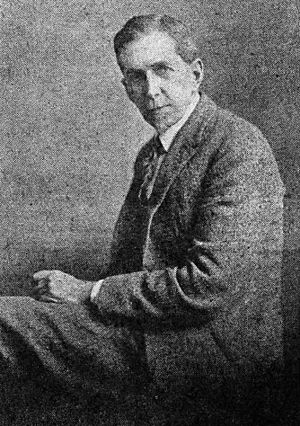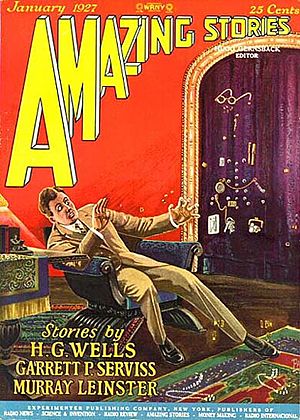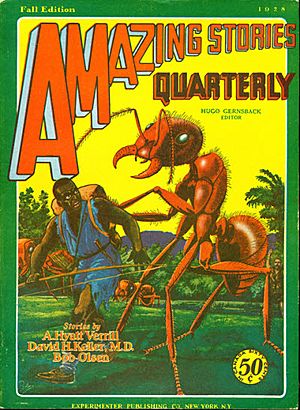Alpheus Hyatt Verrill facts for kids
Alpheus Hyatt Verrill, often called Hyatt Verrill, was a very talented American who lived from 1871 to 1954. He was many things: a zoologist (someone who studies animals), an explorer, an inventor, an artist who drew pictures, and a writer. His father, Addison Emery Verrill, was the very first professor of zoology at Yale University.
Hyatt Verrill wrote many books about nature and science, including exciting science fiction stories.
Contents
A Life of Exploration and Invention
Hyatt Verrill was born in New Haven, Connecticut. He was a very busy person who wrote about many different subjects. These included nature, travel, radio, and even whaling.
Exploring New Places
Verrill loved to explore! He went on several trips to study old cultures and ruins (archaeological expeditions). These trips took him to the West Indies, and all over South and Central America. He traveled a lot throughout North, Central, and South America. Even President Theodore Roosevelt once said that Verrill helped people learn a lot about the West Indies.
Editor and Inventor
In 1896, Verrill worked as a natural history editor for Webster's International Dictionary. This means he helped make sure the dictionary's information about nature was correct. He was also a great artist and drew many pictures for his own books.
In 1902, Hyatt Verrill invented something very cool: the autochrome process. This was a way to take natural-color photographs. Before this, most photos were only in black and white!
Amazing Stories and Books
Hyatt Verrill wrote many science fiction stories. Twenty-six of his stories were published in popular magazines called Amazing Stories. These magazines were known for their exciting and imaginative tales.
When he passed away, a writer named P. Schuyler Miller said that Verrill was "one of the most prolific and successful writers of our time." This means he wrote a huge number of books and articles. He wrote 115 books and many articles for newspapers! His "lost race" stories were often about finding hidden civilizations.
One of his books, When the Moon Ran Wild, was published after he died in 1962. It was released under the name Ray Ainsbury.
See also
 In Spanish: A. Hyatt Verrill para niños
In Spanish: A. Hyatt Verrill para niños






